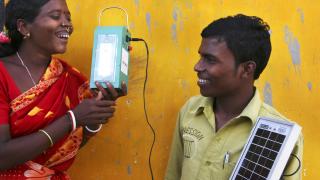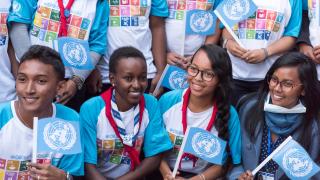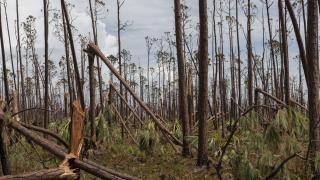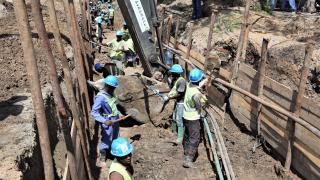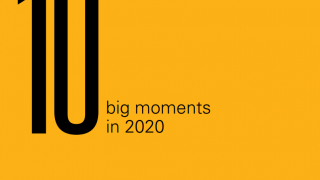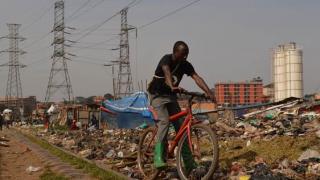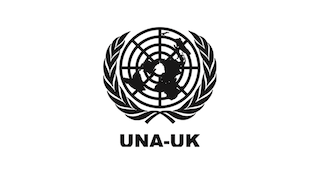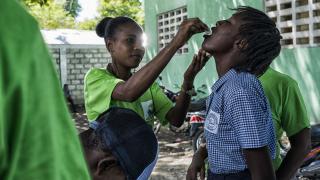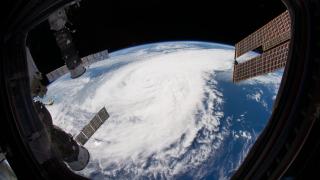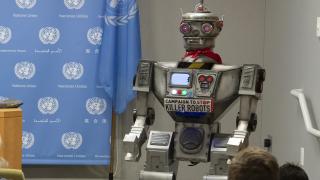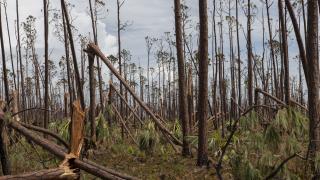
Earlier this year, the UN’s Global Assessment report on biodiversity and ecosystems was released. One of the press headlines simply read: “We are in trouble.” Based on more than 15,000 academic studies by 400 experts in some 50 countries, as well as reports from indigenous peoples, the report warned that nearly one million animal and plant species are at risk of extinction. This alone is a crisis of epic proportions. But it is only one of the pressing challenges we face.
Grave risks… but also opportunities
The Intergovernmental Panel on Climate Change has warned that we have just 10 years to limit global temperature rise to 1.5 degrees Celsius and avoid the worst impacts of climate change. This will require us to reach “peak carbon” in 2020. According to the Climate Action Tracker, current pledges under
the Paris Agreement put us on course for a 2.4 to 3.8-degree rise – and a future of widespread poverty, water scarcity, hunger, displacement and conflict.
We urgently need to increase our ambition and unlock the benefits of a transformational economy, which the Global Commission on the Economy and Climate estimates could be as much as $26 trillion dollars over the next decade. At the same time, we need to address long-standing challenges. One in 10 of us still lives in extreme poverty. One in three of us does not have safe drinking water.
At least half the global population lacks access to proper sanitation, to social protection and to essential health services.
We have also not heeded the lessons of the last financial crisis. Global growth is slowing. Markets are volatile. Social mobility is at what could be an all-time low and inequality is reaching equivalent highs. There is lingering public resentment that the banks were saved at the expense of the average worker.
And other issues, too, are emerging that require urgent attention. Rapidly changing communications platforms are one example. They offer great potential in areas such as delivery of services, but pose challenges in relation to privacy, disinformation and hate speech. Automation and A.I. also offer benefits – in terms of productivity, job creation and innovation. But they too come with risks. According to the UN Conference on Trade and Development, as many as two-thirds of jobs in developing countries could be lost to automation in the coming years. We must have policies in place to ensure new technologies yield a net gain.
And then there are the big-picture trends, such as urbanisation, ageing populations and migration. As we grapple with the current displacement crisis of nearly 70 million people across the world, we must plan to support even greater numbers uprooted by the climate emergency and instability. We must also plan to manage – and harness the benefits of – increasing human mobility.
Finally, we must weather transitions in the global political landscape. Power is mutating and shifting horizontally and vertically – between states and regions – and to stakeholders such as cities, companies, and, to a lesser extent, civil society. The world is becoming more multipolar, but also more polarised.
Overcoming paralysis What can be done?
How can we prioritise challenges to address when everything is urgent? How can the longer-term policies needed to mitigate these risks fit in with election cycles? How can all this complexity be processed, let alone communicated to citizens?
One approach that could help is to focus on “tipping points” – not only the areas where we are close to a point of no return, but also the actions that could help tip the scale back in our favour: the most transformative next steps.
Another approach is to consider risk, particularly “global catastrophic risks”. This term refers to the risk of a catastrophe occurring on a truly global and species-threatening scale, usually considered to mean anything that could wipe out over 10 per cent of the world’s population, or do a comparable amount of damage. The logic behind focusing on risks is that not only is there a moral imperative to do so, but a global system that is better able to manage risks is also a global system that is better able to manage.
UNA-UK’s Together First campaign combines these two approaches, and focuses on the tipping points that relate to global catastrophic risks. We are placing particular emphasis on five areas of risk – climate change, ecosystem collapse, new and emerging technology, pandemics and weapons of mass destruction – where we feel our advocacy could make a difference.
In addition we’ve asked the question: How do you prepare for something you cannot predict? Our view is that you do so by working to ensure the durability of credible systems, which are able to both notice and respond to new risks. This means preserving and strengthening international organisations to create a resilient, capable and “on alert” multilateral system of global governance institutions, able and willing to act promptly and effectively. And so we’ve added a sixth risk area – unknown risks – to take this into account.
In this feature we outline the six risk areas, and the opportunities to address them that will arise in 2020.

Climate
Billions of tonnes of CO2 are released into the atmosphere every year as a result of the burning of coal, oil and gas. Human activity is producing greenhouse gas emissions at record levels, with no sign of a slowdown in sight. If this does not change it will result in drastic onsequences for our species and planet, and pose an existential threat to our way of life.
2020’s UN Climate Summit in Glasgow gives us the chance to avert, or at least mitigate, catastrophe by coordinating global action to protect our planet.
Photo: Scenes from Great Abaco, Bahamas, after Hurricane Dorian. A Category five hurricane, it swept the Bahama islands of Great Abaco and Grand Bahama on 1 September 2019. At least 43 people died, making this one of the worst disasters in the nation’s history. © UN Photo/Mark Garten
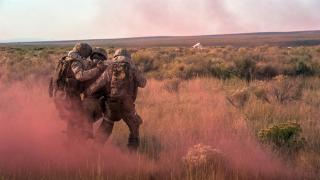
Weapons of Mass Destruction
Today, we are witnessing the unravelling of the international arms control architecture and a gradual backtracking on established arms control agreements, which for decades enabled global stability, restraint and transparency. The continued existence of nuclear weapons in particular poses an ever-greater threat to the survival of humanity. Global standards around chemical weapons have been eroded, and the UN Security Council has curtailed investigations into their use. Bio-warfare laboratories still contain pathogens that could cause untold destruction.
Make-or-break talks for the Nuclear Non- Proliferation Treaty, a review of the UN’s peace and security architecture, and discussions on the future of international cooperation mean that next year will be a crucial year for this agenda.
Photo: US Marines coming under fire from a simulated chemical weapons attack. © USAF/Master Sgt. Kevin Wallace

Emerging Technologies
Technologies can help make our world fairer, more peaceful and more just – from ending extreme poverty to reducing maternal and infant mortality, promoting sustainable farming and decent work, and achieving universal literacy. But technologies can also threaten privacy, erode security and fuel inequality. Separately, technological advances have seen the weaponisation of bots, drones, livestreaming, cyberattacks, ransomware, and data hacks.
Technology doesn’t have a passport and neither must our solutions. Whether it’s a legally binding treaty to prohibit lethal autonomous weapons systems (so-called “killer robots”) or international cooperation on regulating data, our global system has a vital part to play in ensuring that technology provides a net gain for the world and does not exacerbate existing problems.
Photo: 'David Wreckham’ is the friendly robot mascot for the Campaign to Stop Killer Robots – a global campaign working to preemptively ban fully autonomous weapons systems. © Ralf Schlesene
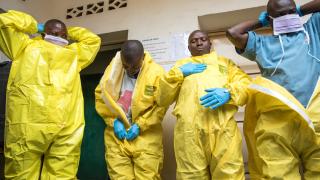
Pandemics
People are more able to travel around the world than ever before in human history. So too, therefore, are diseases. And nearly a hundred years after the invention of antibiotics, their regular use means that more – and more dangerous – forms of resistant bacteria or “superbugs” are evolving. As the Earth moves towards its population peak the risk of pandemics has never been greater. Meanwhile the tragedy of the 3 million people who die each year from vaccine-preventable diseases is still with us.
Nevertheless, in the eradication of smallpox and the near eradication of polio, global health initiatives have shown our international system at its best. How can we adapt the system to better prepare for, and respond to, current and future chal- lenges? And what lessons could be applied to other areas of global risk?
Photo: Medical workers help each other get dressed in protective clothing. As part of the Ebola Emergency Response, the Red Cross works with the World Health Organization (WHO) and the Ministry of Health of the Democratic Republic of the Congo (DRC) to help stop the spread of Ebola in DRC. © UN Photo/Martine Perret
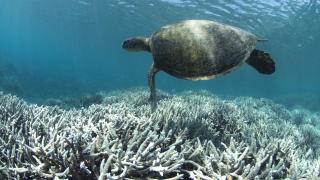
Bee colonies are collapsing. Coral reefs are dying. Rainforests are drying into savannas.
The ecosystems on which our lives and livelihoods depend are deteriorating rapidly. And we are to blame. Human activity has significantly altered a stag- gering three-quarters of all land, and two-thirds of our marine environment. One-third of the Earth’s surface land is now used for crop and livestock produc- tion. The same goes for nearly 75 per cent of our freshwater resources.
Next year world leaders will meet in Beijing to establish a 10-year roadmap to safeguard our world’s biodiversity. If they fail it won’t just impact the wonder and beauty of the world we live in: it will have far-reaching consequences for our production of food and medicine and for the ecosystems of which we are an integral part. The human race itself could join the million or so species this crisis endangers.
Photo: A turtle swims above bleached coral off Heron Island, Australia, part of the Great Barrier Reef. Rising ocean temperatures threaten ocean biodiversity: when water is too warm, corals expel the algae living in their tissues, causing it to turn completely white. © The Ocean Agency/ XL Catlin Seaview Survey/Richard Vevers

Unknown Risks
In 1945 the UN was designed as a tool to manage interstate relations as the world reeled from the horrors of two devastating wars. While war remains a grave threat – and one that has become existential as a result of weapons of mass destruction – the nature of threats to humanity has changed considerably. New, more complex and more sophisticated threats require imaginative and bold responses, and strengthened collaboration between UN Member States, as well as the private sector and civil society. Institutional boundaries must be also bridged, so that political, human rights, and development partners can work in concert.
The Together First Campaign will use the UN’s 75th anniversary year to advance this conversation, and push for concrete substantive changes to our global system to make it ready for the mid-21st century.
Photo: Night earth observation from the International Space Station. © NASA

